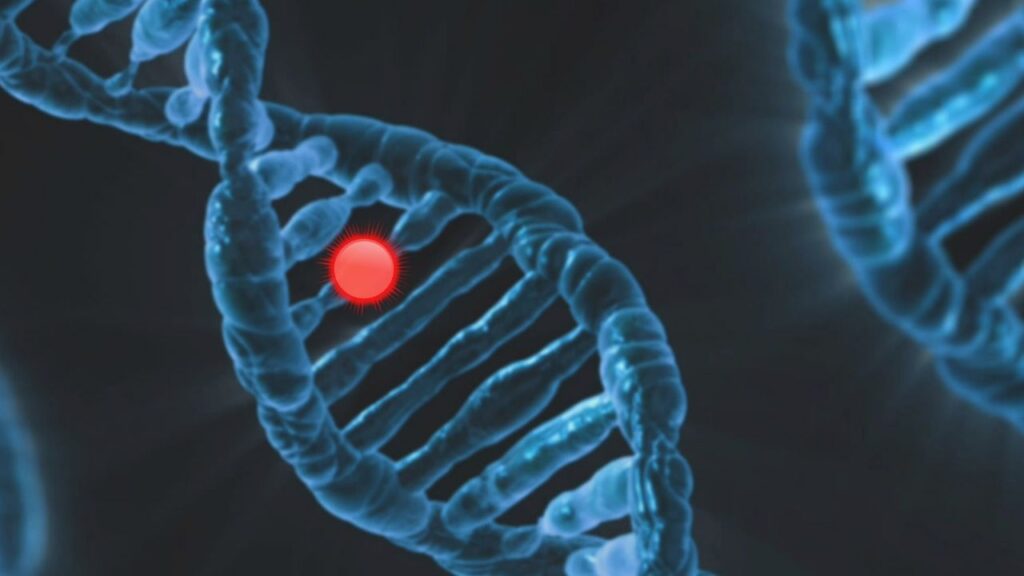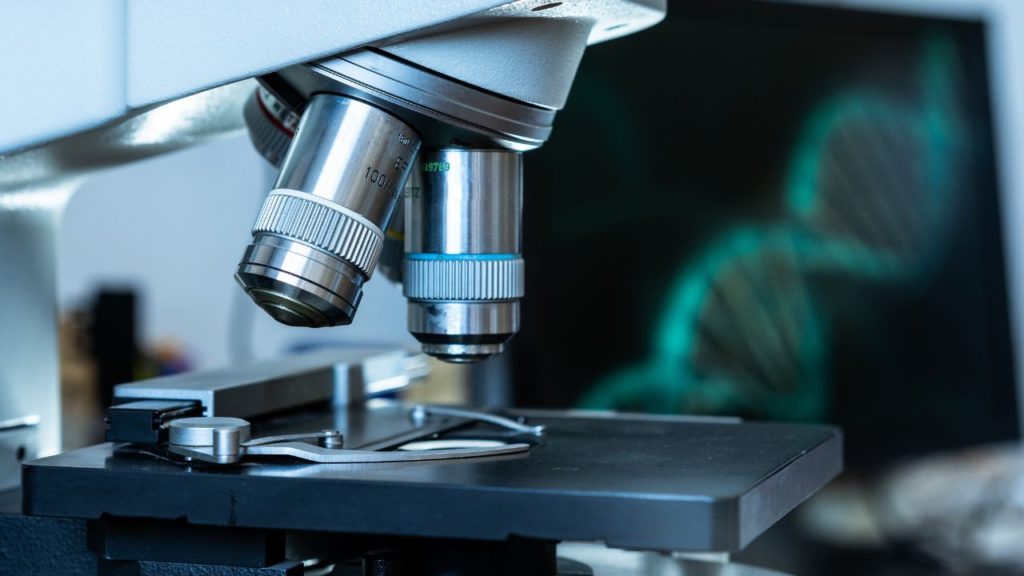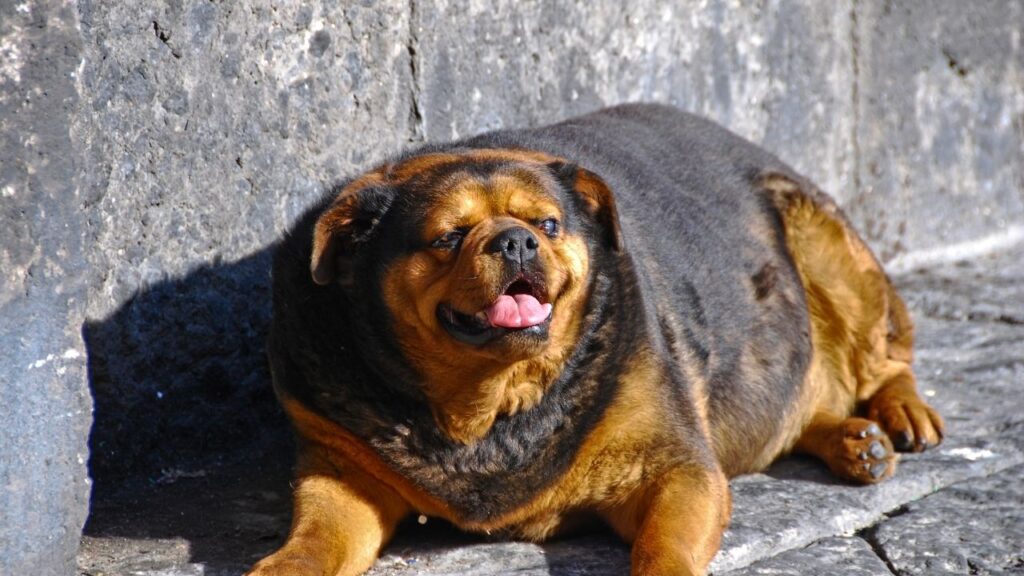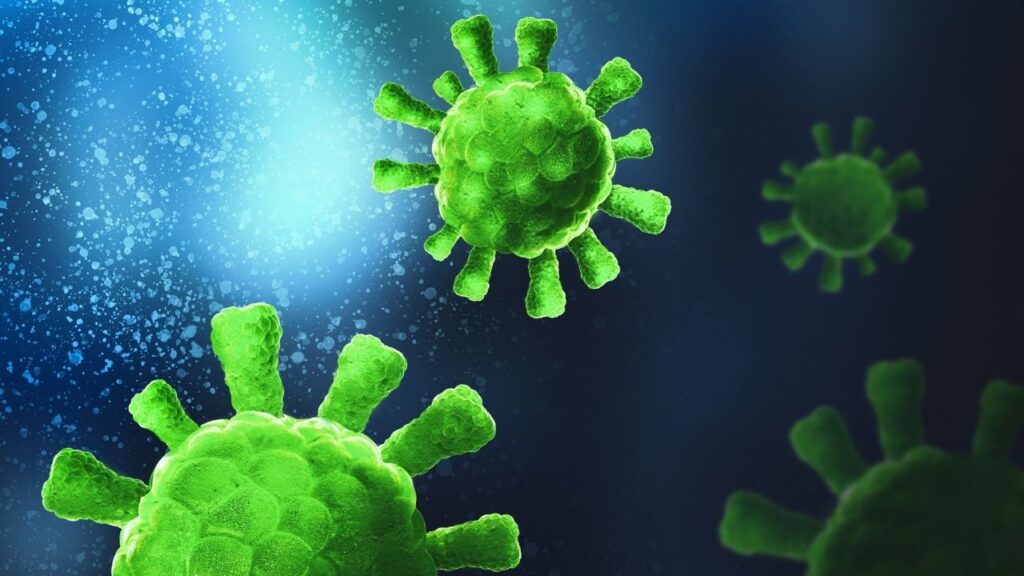Hearing that your dog has cancer can be devastating. As an owner, you may be reflecting on the signs you missed, or speculating about things you could have done differently to prevent the disease. But the reality is that environmental influences are just one piece of the puzzle. Many facets of cancer, such as predisposition and susceptibility, are largely based on genetics, which you as an owner have no control over.
Key Takeaways
- Any canine cancer can be hereditary.
- Cancer can be hereditary in animals, but it can also be caused by exposure to carcinogens throughout the animal’s life. Most cases are caused by a combination of multiple factors.
- Why are so many dogs getting cancer? Part of it is that we have gotten better at finding cancer. We also live in a much more complicated modern world, where chemical and toxin exposures are pretty much impossible to avoid. Dogs have also been artificially selected for many generations without considering cancer risk, so we may have accidentally concentrated harmful mutations in some breeds or lines.
The Role of Genetics in Dog Cancer
Your dog’s DNA plays a massive role in their cancer because genetics are the biological “manual” of the body. Because of this, cancer is often viewed as a disease of the genome (the complete set of genetic material in the body) rather than a disease of the tissue or organ it affects.3
Your dog’s genes can both put her at risk for cancer and protect her from it.
Your dog’s body is made up of trillions of cells, and DNA can be found in each of them. DNA is the genetic material that codes the traits that make up your dog. It is composed of four nucleotides (A, C, T, and G). Simplistically, these four nucleotides are strung together in succession to form a gene. A gene codes for a specific trait, and there can be variations of each gene, called alleles.
Your dog’s genome has approximately 19,000 genes.10 As a reference point, humans have between 20,000 to 25,000.15
Among all species, including dogs, approximately 100 genes have the potential to cause cancer because of the role they play in cell division.2
Genes that play a role in cancer can broadly be clustered into two groups: tumor suppressor genes and proto-oncogenes.
Tumor Suppressor Genes
Tumor suppressor genes regulate cell division to keep it in check and halt the process when it’s not needed. Cancer is driven by unregulated cell growth and division at its core, so this is a very important job.
One example is the gene P53. We are learning that P53 is a powerhouse of a tumor suppressor gene, and mutations in this gene are connected with numerous cancers. If P53 is messed up and can’t work properly, it can’t stop cancerous cells.
Your dog’s genes can both put her at risk for cancer and protect her from it.
Proto-oncogenes
Proto-oncogenes are a group of genes that initiate cell growth and division. Typically, these genes are in the “off” position, only turning “on” when the cell actually needs to grow or divide to continue to support the body.
A mutation may turn these genes into the “on” position even when it is not necessary. These mutated proto-oncogenes are then considered oncogenes. As you can imagine, having an error in a gene that triggers cell division can easily turn into cancer.
For example, the gene C-KIT is a proto-oncogene that is typically implicated in mast cell tumors when it is mutated and becomes an oncogene. If C-KIT is messed up and can’t work properly, it can turn on at random and potentially turn that cell cancerous.
Inherited Genetic Risk
Every cell has two copies of DNA. One is inherited from the mother and the other from the father.14 If both copies of a cancer-associated gene are normal, then your dog has two “healthy” versions of the gene, and in many cases both would have to be mutated for unregulated cell growth (cancer) to occur.
If one copy of a cancer-associated gene is normal and the other is abnormal, your dog would have a higher risk of cancer because only one copy would have to be mutated.
If your dog inherits two abnormal copies, then they are at high risk of developing cancer because they do not possess a normally functioning copy at all.
For example, the gene P53 is a tumor suppressor gene commonly found to be mutated in many cancer types.2 Only one healthy copy of the gene is needed to prevent cancerous growth, but if that one copy experiences a mutation then cancer can develop. Alternatively, if your dog has two healthy copies of the P53 gene, then your dog would have an extra “line of defense.”
Keep in mind that each “bad” copy of a gene can have more than one mutation. This is problematic because mutations can work together to magnify their effects.7 Multiple mutations may also make a cancer diagnosis and treatment plan more difficult to pin down.
In addition, genes often do not act alone. Instead, an entire suite of genes may work together to produce a particular trait, or genes that are physically close to one another in your dog’s genome may “hitchhike” off of one another during meiosis (the type of cell division that occurs for sperm in males and eggs in females).
This is why particular dog breeds have a higher rate of cancer than others. Domestic dogs are selectively bred for desirable traits. However, retaining desirable traits can also increase the frequency, or fix (make permanent), variants of genes that are more likely to cause cancer.6 Dog breeds known to have specific types of cancer likely inherited commonly mutated versions of particular genes that were passed down many generations ago.2, 5
Nationwide is combing through their pet insurance claims to learn about cancer risk. Listen in for popular breeds with the highest risk – and lowest! - in this episode of Dog Cancer Answers.
For example, a study that investigated 15,881 dog mortalities across a database of purebred dogs found that Irish Water Spaniels had the highest proportional mortality caused by cancer. Of the 95 logged into the database, 53 of them died of cancer.1
In addition, some breeds may inherit mutated genes associated with a particular kind of cancer. There are very few cases of definitive knowledge surrounding these, but one is the high rate of renal cystadenocarcinoma observed in German Shepherds.14
Knowledge of your dog’s breed and the frequency of mutated genes may inform you of the likelihood of your dog getting cancer or may help you choose a breed altogether. In addition, getting information on the frequency and history of cancer in your dog’s lineage may help you prepare.
For example, a dog whose parents have both had osteosarcoma probably has a higher genetic risk of developing that same cancer himself. And remember that mixed-breed dogs have genes too! Mixes often may be at risk for the same cancers that their purebred ancestors are.
Inherited Protection
Just as your dog inherits “risk,” they can also inherit “protection.” Your dog may inherit two normal copies of genes associated with cancer, decreasing the likelihood that they will develop it.
Spontaneous Mutations
While hereditary mutations in genes that lead to cancer are common, most cancers are thought to be non-hereditary.2 Rather, these cancers are caused by spontaneous mutations that occur over the course of a dog’s lifetime.
There are many types and causes of genetic mutations that can lead to cancer. For example:
- During DNA replication: The DNA in each cell has to replicate before the cell can divide. The machinery behind DNA replication is typically pretty accurate, but mistakes do sometimes happen. These mistakes can introduce a mutation into the gene that could cause unregulated cell growth if it occurs in an oncogene or tumor suppressor gene.
- Environmental exposure: It is inevitable that your dog will come into contact with radiation, toxins, and viruses throughout their lifetime. These can alter DNA and introduce mutations. If this occurs in genes associated with cancer, then unregulated cell growth becomes a possibility.
These spontaneous mutations only impact the cell they occur in, and subsequently its “daughter” cells. However, spontaneous mutations can become inherited mutations if they occur in the DNA found in sperm or eggs.
Dr. Charlotte Hacker explains how genetics play a role in cancer development. Fascinating!
Do “Bad Genetics” Always Cause Cancer?
Remember that your dog still has protection against cancer even if they have a mutated copy of a tumor suppressor gene or proto-oncogene.2 Even two “bad” copies of a gene associated with cancer does not always lead to cancer.
The development of cancer will ultimately depend on the specific gene that is affected, the type of mutation, and how the mutation alters the functionality of the gene.
Unfortunately, information in this regard for dogs is lacking. The data that do exist are largely exploratory and are connected to a specific breed or gene. In reality, cancer typically involves mutations in many genes. With the exception of a few cases, available information that connects particular gene mutations with specific cancers are correlative, not causative.12
Broadly, canine cancer genetic research is far behind human cancer genetics research. This is due to more limited funding and the increased genetic variation in dogs, which complicates studies.
Problematic Genes We Know
There are a number of tumor suppressor genes and proto-oncogenes that are commonly associated with cancer in general or particular types of cancer. Below are a few examples.
BHD: A mutation in the BHD gene causes renal cystadenocarcinoma and nodular dermatofibrosis. This mutation is commonly observed in German Shepherd Dogs and predisposes them to kidney cancer.14 This is a rare example of a specific mutation being known to cause a specific cancer, and a test is available to determine if your German Shepherd has the variant.
P53: The P53 gene is a tumor suppressor gene that often has an inherited mutation in dogs with cancer.2
WAF-1: The WAF-1 gene is a tumor suppressor gene implicated in canine melanoma and osteosarcoma.2
BRCA1 and BRCA2: Similar to breast cancer in human females, mutations in the BRCA1 and BRCA2 genes may contribute to canine mammary tumors. There is evidence to suggest that this is especially the case in English Springer Spaniels.11
KIT: The KIT gene is a proto-oncogene that when mutated may contribute to malignant melanomas and gastrointestinal stromal tumors in dogs.4, 8 It is also a gene whose mutation status can help veterinarian oncologists make treatment decisions for fighting your dog’s specific type of cancer.
For example, dogs that are diagnosed with mast cell tumors and who have a mutation in exon 11 (a particular region of the gene that codes for a protein to be made) of the c-KIT gene will respond better to the chemotherapy drug toceranib phosphate (Palladia™) than dogs who do not.16
Unfortunately, developing resistance to the drug is nearly inevitable.17 Complicating matters even more is that certain cancers with mutations in the c-KIT gene, such as canine oral melanoma, may not have any connection to the efficacy of toceranib phosphate.18
Dr. Elaine Ostrander studies cancer in dogs and people to help treat both. Amazing discussion on DOG CANCER ANSWERS.
Genetic Testing for Dog Cancer
DNA genetic testing for dogs with other conditions known to be caused by a specific gene or variant of that gene are available, but this is not the case for cancer.12 In comparison to humans, tests for cancer predisposition in dogs are few and far between.14
For example, the MyRisk™ hereditary cancer test evaluates 48 genes associated with 11 different hereditary cancers in humans, but there is no similar test for dogs. This is largely because research on the link between genetic variants and cancer risk in dogs is lacking.13
In general, the research surrounding genetic testing for dogs is in its infancy, and should be used as just one piece of the puzzle in determining your pet’s predispositions and risk for particular diseases. As of 2021, tests were available for more than 160 conditions and averaged at about $200. There’s hope that these kits will extend into the world of testing for canine cancer predisposition, but this is likely at least ten years down the road.12
- Adams VJ, Evans KM, Sampson J, Wood JL. Methods and mortality results of a health survey of purebred dogs in the UK. J Small Anim Pract. 2010;51(10):512-524. doi:10.1111/j.1748-5827.2010.00974.x
- Bell JS. The genetics of canine cancer. Canine and Feline Breeding and Genetic Conference. October 2-4, 2003. Sturbridge, MA. https://www.vin.com/apputil/content/defaultadv1.aspx?meta=Generic&pId=11165&id=3848656#:~:text=Most%20tumor%2Dsuppressor%20genes%20only,the%20production%20of%20cancer%20cells.
- Chibuk J, Flory A, Kruglyak KM, et al. Horizons in Veterinary Precision Oncology: Fundamentals of Cancer Genomics and Applications of Liquid Biopsy for the Detection, Characterization, and Management of Cancer in Dogs. Front Vet Sci. 2021;8:664718. doi:10.3389/fvets.2021.664718
- Chu PY, Pan SL, Liu CH, Lee J, Yeh LS, Liao AT. KIT gene exon 11 mutations in canine malignant melanoma. Vet J. 2013;196(2):226-230. doi:10.1016/j.tvjl.2012.09.005
- Davis BW, Ostrander EA. Domestic dogs and cancer research: a breed-based genomics approach. ILAR J. 2014;55(1):59-68. doi:10.1093/ilar/ilu017.
- Doherty A, Lopes I, Ford CT, Monaco G, Guest P, de Magalhães JP. A scan for genes associated with cancer mortality and longevity in pedigree dog breeds. Mamm Genome. 2020;31(7-8):215-227. doi:10.1007/s00335-020-09845-1.
- Gorelick AN, Sánchez-Rivera FJ, Cai, Y. (Phase and context shape the function of composite oncogenic mutations. Nature 2022;582:100-103.
- Gregory-Bryson E, Bartlett E, Kiupel M, Hayes S, Yuzbasiyan-Gurkan V. Canine and human gastrointestinal stromal tumors display similar mutations in c-KIT exon 11. BMC Cancer 2010;10:559. doi:10.1186/1471-2407-10-559
- Mryiad Genetics. Meet MyRisk™ with RiskScore®. Myriad Genetics. No publication date available. https://myriad.com/hcp-myrisk-hereditary-cancer-test/ Accessed January 16, 2023.
- Ostrander EA, Wayne RK. The canine genome. Genome Res. 2005;15(12):1706-1716. doi:10.1101/gr.3736605.
- Rivera P, Melin M, Biagi T, et al. Mammary tumor development in dogs is associated with BRCA1 and BRCA2. Cancer Res. 2009;69(22):8770-8774. doi:10.1158/0008-5472.CAN-09-1725.
- Robins, M. 2021. What can dog DNA tests tell you about your dog’s health? AKC Kennel Club. September 19, 2021. https://www.akc.org/expert-advice/health/dog-dna-testing-genetic-screenings/. Accessed January 16, 2023.
- Robinson, K. Does Embark test for cancer risk? Embark. No publication date available. https://help.embarkvet.com/hc/en-us/articles/115000246054-Does-Embark-test-for-cancer-risk-. Accessed December 23, 2022.
- Tschirgi, M. Inherited cancer in dogs. NeoGen Paw Print Genetics. April 21, 2014. https://www.pawprintgenetics.com/blog/2014/04/21/inherited-cancers-dogs/. Accessed December 23, 2022.
- Willyard C. New human gene tally reignites debate. Nature 2018;558:354-355.
- Halsey CHC, Rose BJ, Gustafson DL, Thamm DH. Canine mast cell tumor and toceranib phosphate (Palladia™): Development of a spontaneous canine model of kinase inhibitor resistance. Molecular Targeted Therapies Mechanisms of Resistance. May 9-12, 2012. San Diego, California. Abstract A56.
- London CA, Malpas PB, Wood-Follis SL, et al. Multi-center, placebo-controlled, double-blind, randomized study of oral toceranib phosphate (SU11654), a receptor tyrosine kinase inhibitor, for the treatment of dogs with recurrent (either local or distant) mast cell tumor following surgical excision. Clin Cancer Res. 2009;15(11):3856-3865. doi:10.1158/1078-0432.CCR-08-1860
- Smedley RC, Thaiwong T, Deeth LE, Kiupel M. Correlation between KIT expression and c-KIT mutations in 2 subtypes of canine oral melanocytic neoplasms. Vet Pathol 2021;58(4):683-691.
Topics
Did You Find This Helpful? Share It with Your Pack!
Use the buttons to share what you learned on social media, download a PDF, print this out, or email it to your veterinarian.









